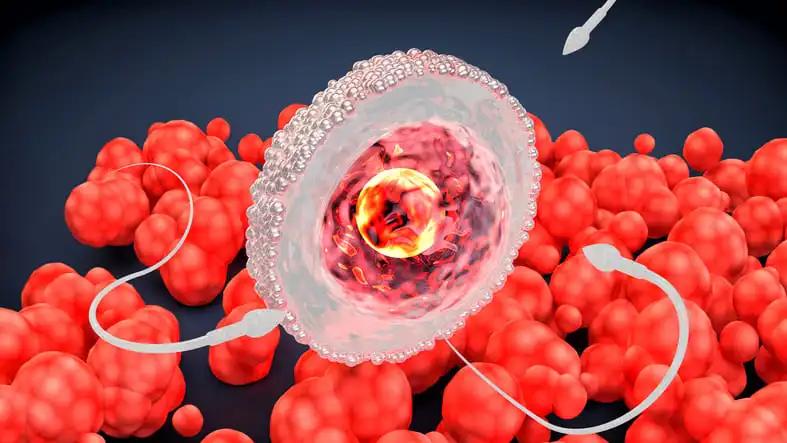KEY TAKEAWAYS
- The CARTITUDE-5 Phase 3 trial (NCT04923893) aimed to compare the efficacy of cilta-cel versus Rd maintenance in patients with NDMM who are ineligible or decline ASCT as initial treatment.
- Eligible patients received 5-6 cycles of VRd followed by either cilta-cel or Rd maintenance.
- The study’s findings revealed insights into the efficacy and safety of cilta-cel after VRd in NDMM patients who are ineligible or decline ASCT.
Autologous stem cell transplant (ASCT) is the standard treatment for transplant-eligible patients with newly diagnosed multiple myeloma (NDMM). However, for those who are ineligible or choose not to undergo ASCT, the VRd regimen is a viable treatment option. Ciltacabtagene autoleucel (cilta-cel) is a promising therapy that utilizes chimeric antigen receptor T cells (CAR-T) to target B-cell maturation antigen (BCMA) with two single-domain antibodies. The CARTITUDE-1 study demonstrated that a single infusion of cilta-cel resulted in long-lasting and substantial responses in heavily treated patients with relapsed/refractory MM (Berdeja, Lancet 2021). The objective of the CARTITUDE-5 trial is to compare the efficacy of cilta-cel versus Rd maintenance after VRd induction in patients with NDMM who are ineligible or decline ASCT. This study aimed to determine the effectiveness of cilta-cel as a treatment option for these patients and potentially provide a new therapeutic approach for those who cannot undergo ASCT.
The CARTITUDE-5 trial aims to recruit approximately 650 eligible patients who are younger or equal to 18 and have been diagnosed with multiple myeloma (MM) according to International Myeloma Working Group criteria. The patients’ Eastern Cooperative Oncology Group performance status must be ≤1, and they must have detectable disease at screening. They are eligible if they decline high-dose chemotherapy with autologous stem cell transplant (ASCT) or are not candidates for ASCT as initial treatment. Patients who previously received BCMA-targeting therapy, CAR-T therapy, or treatment for multiple myeloma (MM) or smoldering myeloma (exception of a short course of steroids or one cycle of VRd) will be excluded. Enrolled patients will receive 5-6 cycles (21 days) of VRd, with one process allowed before screening. VRd includes 1.3 mg/m2 subcutaneous bortezomib on days 1, 4, 8, and 11; 25 mg oral lenalidomide on days 1-14; and 20 mg oral dexamethasone on days 1, 2, 4, 5, 8, 9, 11, and 12. Patients without disease progression will be randomly assigned 1:1 to either the cilta-cel arm or the Rd maintenance (control) arm.
Patients in the cilta-cel arm will undergo apheresis and receive bridging therapy (2 additional VRd cycles) before receiving the cilta-cel infusion. The target dose of cilta-cel is 0.75×106 CAR+ viable T cells/kg. Cilta-cel infusion will occur 5-7 days after lymphodepletion ( intravenous (i.v.) cyclophosphamide 300 mg/m2 and fludarabine 30 mg/m2 daily for 3 d) followed by a treatment-free observation phase. Patients in the control arm will receive 2 additional VRd cycles followed by Rd maintenance in 28-day cycles (25 mg oral lenalidomide: d 1–21 and 40 mg oral dexamethasone: d 1, 8, 15, and 22) until disease progression or unacceptable toxicity.
The primary endpoint of the CARTITUDE-5 trial is progression-free survival (PFS). In contrast, secondary endpoints include sustained minimal residual disease (MRD)-complete negative response (CR), MRD-negative CR rate at 9 months, overall MRD-negative CR rate, overall survival, percentage of patients achieving ≥CR, time to subsequent anti-myeloma therapy, PFS on next-line treatment (PFS2), incidence and severity of adverse events (AEs), pharmacokinetic and pharmacodynamic markers, and changes in health-related quality of life. The study revealed single infusion of cilta-cel after VRd in NDMM patients offers the advantage of a treatment-free period compared to continuous Rd therapy until disease progression, highlighting its efficacy and safety.
Source: https://tandem.confex.com/tandem/2022/meetingapp.cgi/Paper/19023
Clinical Trial: https://clinicaltrials.gov/ct2/show/NCT04923893
Agha, M., Dhakal, B., Dytfeld, D., Manier, S., Delforge, M., Kuppens, S., Afifi, S., Deraedt, W., Morris, A. T., Schecter, J. M., Gilbert, J., Yalniz, F., Florendo, E., Pacaud, L., Hungria, V., Usmani, S. Z., & Mateos, M. V. (n.d.). Cartitude-5: A Randomized, Phase 3 Study of Bortezomib, Lenalidomide, and Dexamethasone (VRd) Followed By Ciltacabtagene Autoleucel Versus Vrd Followed By Lenalidomide and Dexamethasone (Rd) Maintenance in Patients with Newly Diagnosed Multiple Myeloma (NDMM) Not Intended for Transplant. https://tandem.confex.com/tandem/2022/meetingapp.cgi/Paper/19023



